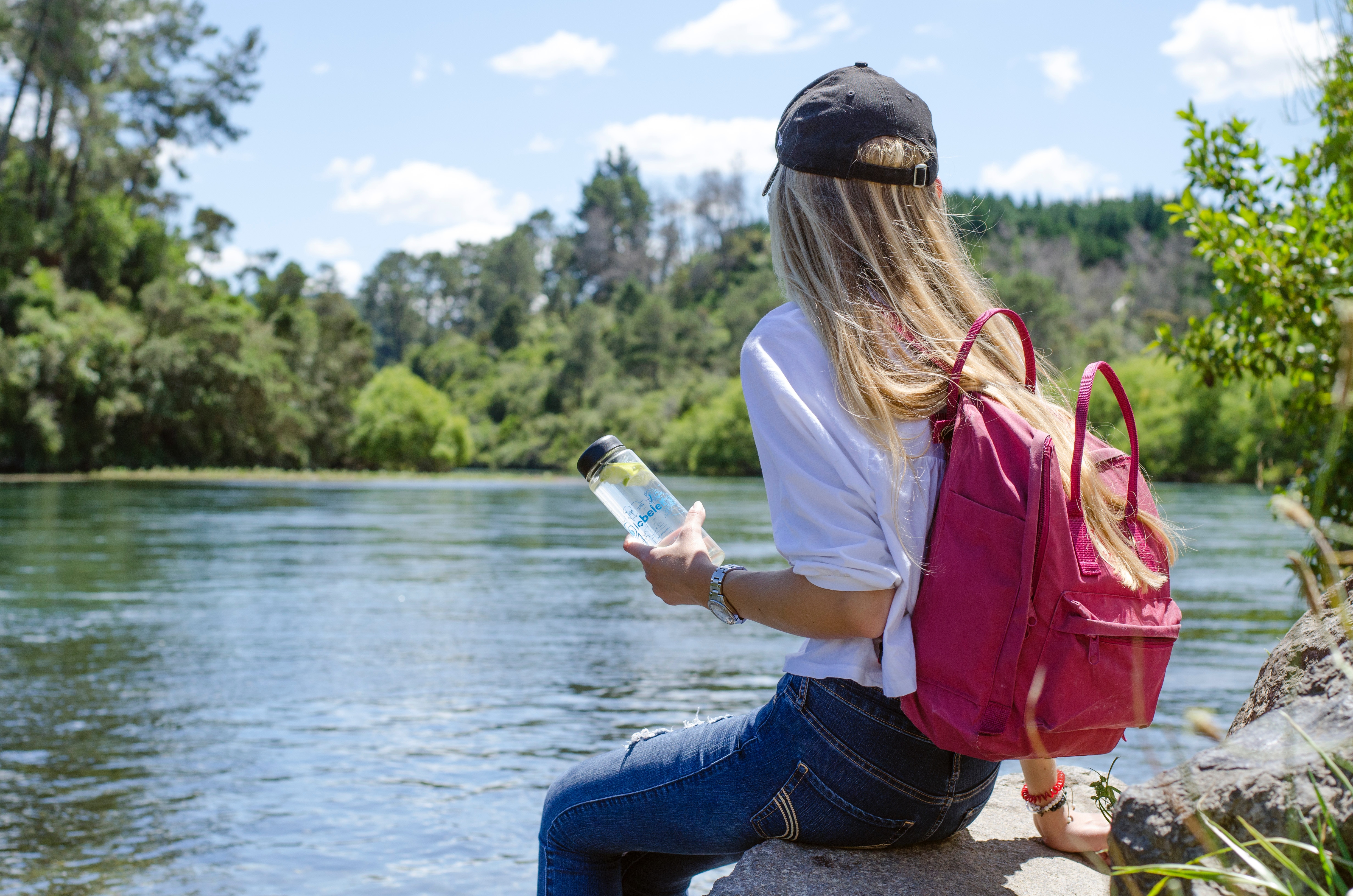Choosing the Best Water Bottle

Find your perfect water bottle mate with our reusable water bottle materials guide.
It won't undo the looming plastics problem in our oceans, but bringing your own water bottle does make a difference. Plastic waste is one of the biggest environmental concerns of our time, with a whopping 91% of all plastic waste not recycled[1]. With an estimated 8 million metric tons leaked into the oceans each year, it is estimated that by 2050 the ocean will contain more plastic by weight than fish[2].
Finding a bottle you love will increase your chances of replacing single-use bottles, and a personalized design will help you know which is yours when you hit the gym. The trend for bringing your own bottle says a lot about how good design has the power to create behavior change for a more sustainable planet. Mindful consumers are questioning the throw-away mentality and voting with their dollars, as evidenced by the nearly $8 billion reusable water bottle industry[3].
With so many options for designs, materials and price points, how do you choose? Let our snapshot of reusable water bottle materials guide you to the best water bottle for you.
How to Choose a Reusable Water Bottle Material and Style
Filter or no filter, glass or stainless? If you care about the environment, you may wonder what materials are more sustainably sourced and produced. Materials assessment and supply chain are complex systems which vary greatly based on how materials are sourced, manufactured and transported. It’s therefore very challenging to “rank” a given brand or material without a complete life cycle analysis. That being said, there are definitely clear advantages to certain materials and things to consider about how you intend to use your product (if you’re taking it to the gym regularly, a you may want a durable steel bottle over glass). Below are some of the top materials used, and pros and cons.
|
Main Material |
Sustainability Facts |
Pros |
Cons |
Best For… |
|
Stainless Steel |
Energy intensive to mine, manufacture and transport: requires 500 uses to surpass the carbon footprint of a PET plastic bottle[4]. The #1 recyclable material in the U.S. (but you’ll hopefully be using not recycling!). |
Durable. Doesn’t leach chemicals into liquids. Won’t pick up flavors so you can interchange your beverage choice throughout the day. Usually found insulated. |
Heavy, costly, some flavor profiles remain |
A versatile vessel to carry your coffee, water or wine.
|
|
Glass |
Perhaps the most sustainable material, glass has been serving us since 1500 B.C. Manufacturing is similar carbon footprint to a PET plastic bottle, but it’s heavy weight makes the carbon footprint higher due to transportation. 100% recyclable. |
Elegant mouthfeel (it’s like you’re drinking from a…glass!). Visibility may help you drink more. Clean taste. New varieties are shatter resistant. |
Heaviest and most fragile. Not insulated. Some events and venues do not allow glass. |
In-office or other places you won’t worry about dropping it. |
|
Silicone |
Not all silicone is created equal, but silicone is arguably more sustainable than plastic due to it’s long life and mostly natural sources of silica. However many types are made with petroleum or natural gas, and it is not biodegradable or recyclable. It’s sustainability factor is relative based on how you use it, as it can be used indefinitely. |
Odor and stain resistant. Does not fade or scratch. |
Make sure to buy “food-safe” silicone. |
At the gym or other sporting events. |
|
Plastic |
Many plastics are sourced from non-renewable petroleum, and the manufacturing process can be very energy intensive. Recycling process is complex, and differs by type of plastic used. Some chemicals may leach, even if BPA free, such as BPS (bisphenol substitute). |
The original hikers bottle, Nalgene and others are famed for their practicality for least weight, easy carrying capacity, and lifetime guarantees. |
Not insulated. May leach chemicals into liquids. |
Sports or outdoor adventure. |
|
Aluminum |
Another lightweight option, that unfortunately has to be lined with plastic. Watch out for BPA lined bottles. |
Inexpensive and lightweight. |
Could have BPA other chemicals leach into liquid from plastic liner. |
Good for sports if you’re not worried about plastics contamination. |
|
Filtered |
Filters are made in so many variations now that you can likely find your filter bottle in any of the materials above. |
Healthy, clean water at your fingertips. |
Expensive. Filter adds bulk, weight, and waste when it’s used. |
When traveling or unsure about quality of tap water. |
|
Smart Bottle |
Prompts you to drink more with notifications or lights. Made with various materials. |
If you need a coach for drinking more, this may be helpful. |
Expensive and mixed reviews. |
New to drinking water and want to track every sip. |
In summary, the best reusable water bottle is one that you use. All reusable materials above can be a great sustainability option if you replace single-use plastics. Investing in a bottle you love will ensure you use it again and again, and help perpetuate the social norm of personal responsibility with reducing waste.
At Carmel Road, we’ve been re-imagining our relationship with what we discard, finding new ways to recycle, compost or return items such as pallets and unused packaging. As of the end of 2017, we achieved a 98.2% diversion rate (including pomace composting). Learn more about our waste diversion initiatives here. Whether on an individual basis or within an organization, creating lasting changes to be more sustainable takes time, effort, and intention. Cheers to being informed in our choices and responsible in our consumption!



